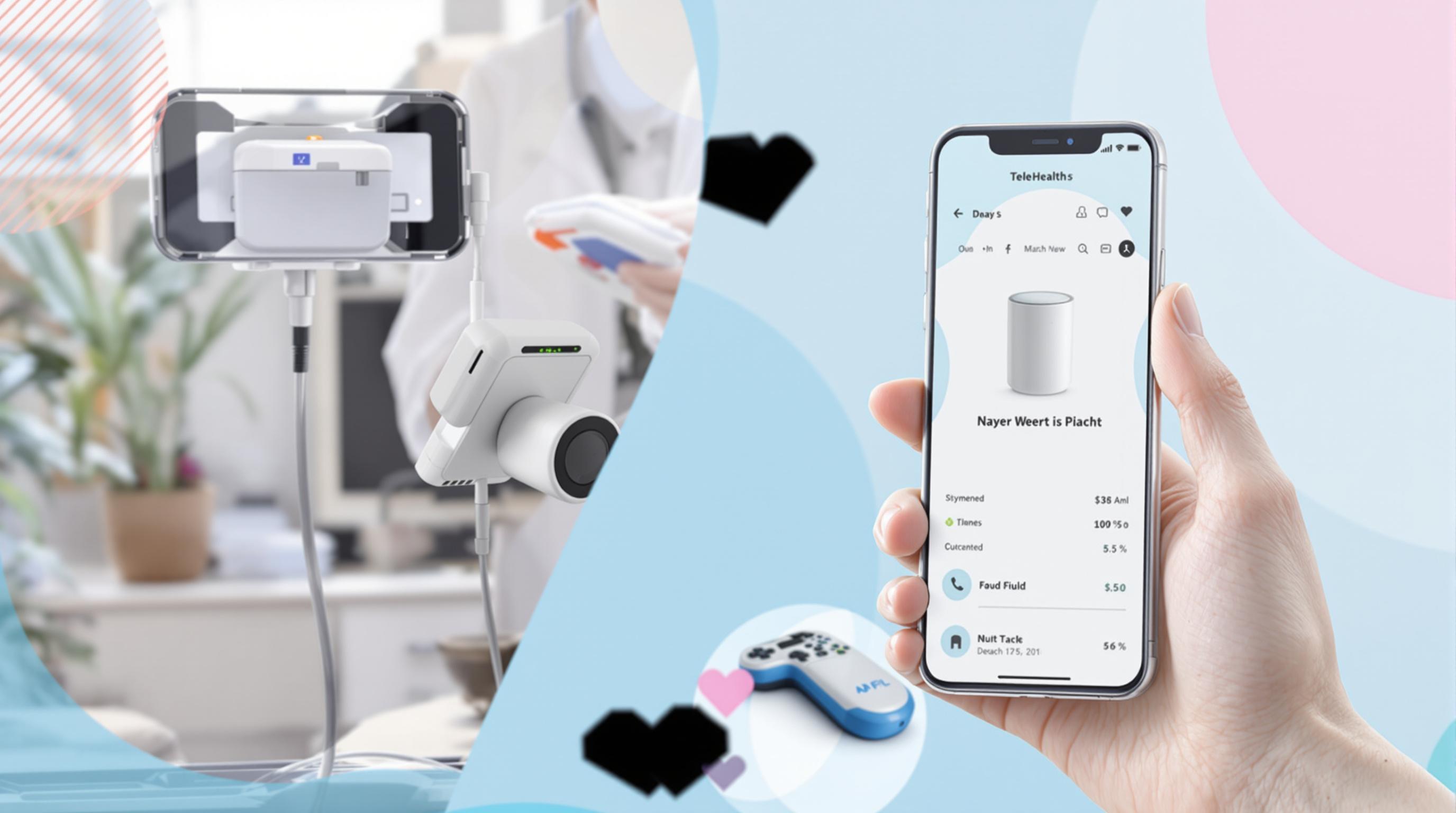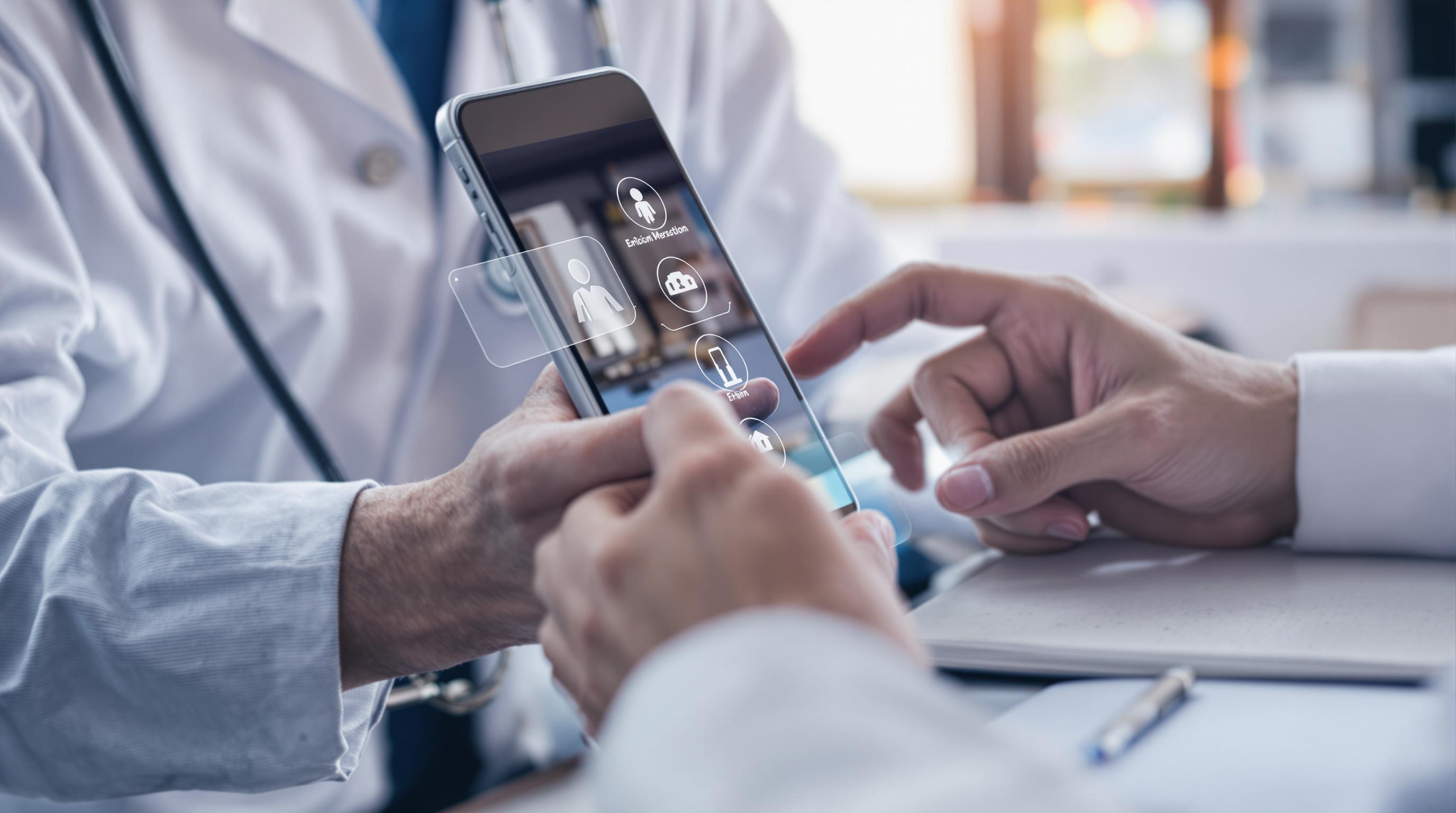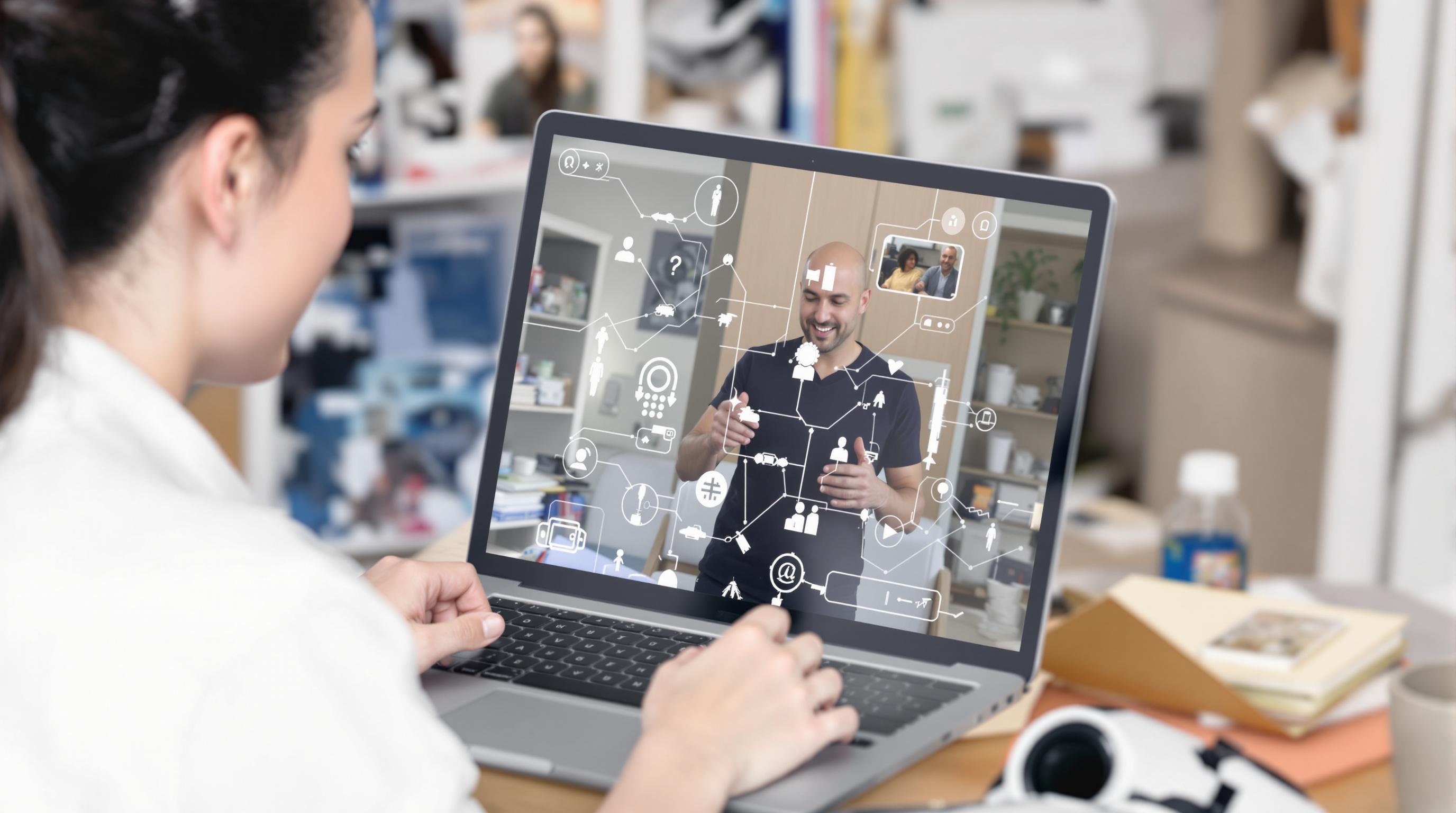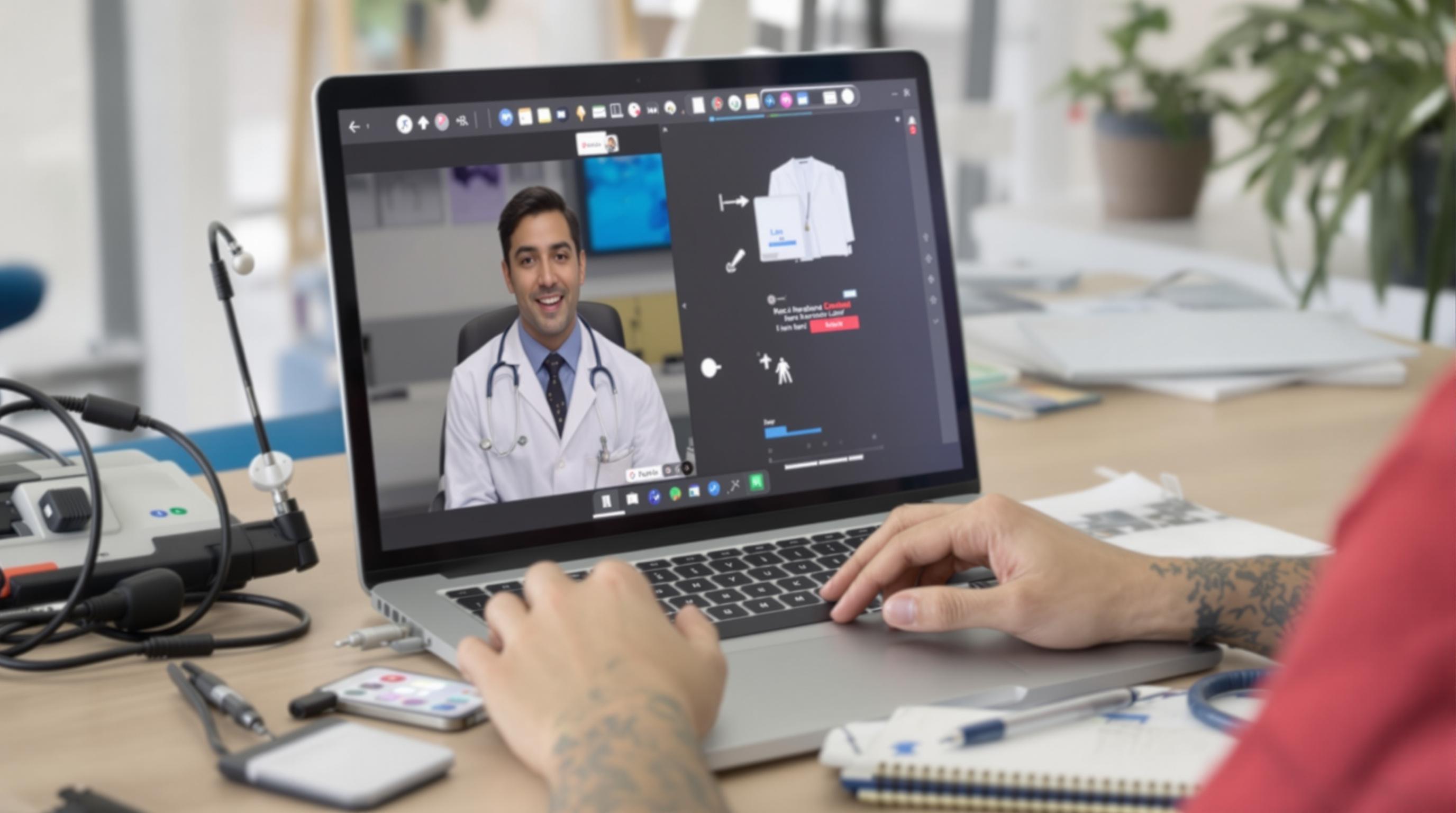Related Articles
- The Unexpected Impact of Environmental Factors on the Accuracy of Medication Dispensing Technologies
- Exploring the Influence of Mental Health Stigma on Accessibility and Affordability of Coverage in Modern Insurance Plans
- How Cloud Storage Quirks Are Quietly Complicating Patient Data Protection in Modern Healthcare Settings
- Top 6 Emerging Medical Billing Platforms Revolutionizing Practice Revenue Cycles Since 2019
- When Digital Distance Deepens Divide: Surprising Social Costs of Remote Health Services in Underserved Communities
- The Unexpected Role of EHR Usability in Physician Burnout and Strategies to Reclaim Workflow Balance
Top 6 Cutting-Edge Telehealth Devices Launched Since 2019 Breaking New Ground in Patient Experience
Top 6 Cutting-Edge Telehealth Devices Launched Since 2019 Breaking New Ground in Patient Experience
Since 2019, telehealth devices have transformed patient care by making remote health management more accessible and effective. This article explores six groundbreaking devices that have pioneered new standards in patient experience, blending innovation with convenience.
The Rise of the Remote Patient Monitoring Revolution
Imagine being able to detect heart arrhythmias in real-time without leaving your home. The Apple Watch Series 5, launched in late 2019, brought FDA-cleared atrial fibrillation detection to millions, changing how patients and doctors monitor cardiac health.
By 2021, over 30 million people worldwide had used wearable ECG capabilities introduced by Apple, reflecting a surge in confidence toward telehealth technologies. This wearable’s ability to alert users and physicians with timely notifications was a game-changer, especially for elderly patients at risk of stroke or heart failure.
1. TytoCare: Your At-Home Medical Exam Device
TytoCare caused a stir in remote diagnostics by providing a comprehensive exam kit—complete with an otoscope, stethoscope, and thermometer. Introduced in 2020, this handheld device helps primary care providers remotely examine patients' ears, throat, heart, and lungs with clinical-grade accuracy.
Case Study: A 2021 pilot program at a pediatric clinic in Chicago reported a 40% decrease in unnecessary ER visits when families used TytoCare kits for respiratory complaints, highlighting how device-assisted telehealth effectively triages patient needs.
Humor Break: The Telehealth Doctor You Never Argued With
Ever wished your doctor could just “talk” to you without those awkward waiting room smiles and small talk about your “bad diet”? Telehealth devices have cut through the chit-chat. Your new doc doesn’t mind your pajama attire or messy hair—and won’t critique your midnight snack habits unless directly relevant. Technology is doing the hard work of monitoring health, minus the drama!
2. QardioCore: Continuous ECG Without Discomfort
The QardioCore, released in 2019, offers continuous, wireless ECG monitoring without the hassle of sticky electrodes. This sleek chest strap blends patient comfort with clinical precision, continuously streaming cardiac data monitored remotely by healthcare professionals.
Its adoption skyrocketed among athletes and high-risk cardiac patients. In fact, a 2022 study published in Journal of Electrocardiology found QardioCore detected arrhythmias 25% earlier than traditional Holter monitors, paving the way for faster interventions.
3. Babylon Health’s AI-Powered Consultation App
Babylon Health isn’t just a device but a telehealth ecosystem launched in 2019 that includes AI-driven symptom checking and video consultations with doctors. Leveraging AI, it empowers patients by triaging symptoms before a real doctor steps in.
For anyone seeking convenience—especially in rural or underserved areas—Babylon Health delivers healthcare on demand through smartphones, reducing waiting times dramatically by up to 60%, according to their 2022 user satisfaction report.
Changing Lives: A Patient’s Story with Smart Inhalers
Meet Sarah, a 45-year-old asthma patient from Denver. Since starting to use smart inhalers like Propeller Health’s device in 2020, her emergency hospital visits dropped by half. The device tracks inhaler usage and environmental triggers, sending real-time alerts and actionable advice through a smartphone app. Such personalized feedback has revolutionized chronic disease management by bringing the doctor-patient relationship directly into the home.
4. Propeller Health’s Smart Inhaler System
The Propeller Health device combines a sensor with patients’ existing inhalers, connecting to a mobile app that tracks medication adherence and environmental factors like pollen or pollution. This granular data enhances asthma and COPD care through patterns and predictive analytics.
An MIT review in 2021 highlighted Propeller’s ability to decrease asthma-related emergency visits by up to 79%, attributing this to proactive alerts deterring exacerbations before they escalate.
5. MedWand: Bringing the Clinic Home
MedWand is a telehealth device designed to replicate the physical exam remotely. Released in 2021, it integrates a digital stethoscope, otoscope, thermometer, and even ECG in a single handheld tool.
This device enables physicians to perform nearly 90% of a physical exam virtually. In rural Alaska, the MedWand drastically reduced patient travel time by an average of 4 hours per visit—a logistical breakthrough for remote communities reliant on telemedicine.
6. Omron HeartGuide: The Watch That Takes Your Blood Pressure
Billed as the world’s first wearable blood pressure monitor cleared by the FDA (launched in 2020), the Omron HeartGuide looks like a sporty smartwatch but acts like a mini sphygmomanometer.
This device enables hypertensive patients to take clinically accurate BP readings anytime, anywhere and store data digitally for physician reviews. Recent studies confirm that patients using HeartGuide improved medication adherence by 30%, as daily self-monitoring increased awareness and engagement.
Why These Devices Matter
Telehealth devices are not just gadgets; they fundamentally redefine the patient experience by promoting proactive health management, reducing hospital visits, and democratizing access to healthcare services. The rapid innovation since 2019 underscores a shift toward patient-centered care powered by technology.
As healthcare systems worldwide grapple with aging populations and resource constraints, these cutting-edge telehealth tools bridge gaps—empowering patients to stay connected with providers and manage conditions efficiently from home.
Final Thoughts from a 52-Year-Old Tech Enthusiast
As someone who grew up when house calls were still a thing, seeing how telehealth devices have blossomed within five years is astonishing. These technologies don’t just save time—they save lives and rewrite the narrative around healthcare accessibility. Whether you are a teen navigating chronic illness or a senior wanting to age in place safely, the future of medicine is in the palm of your hand. Literally.




